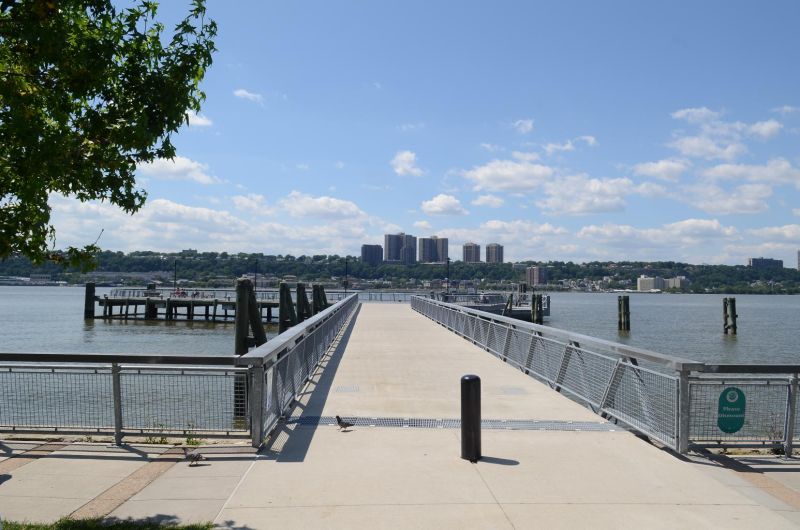 New York City is a collection of islands, a fact too often overlooked in transportation planning and real estate development.
New York City is a collection of islands, a fact too often overlooked in transportation planning and real estate development.
As the regional economy changed over the past century, the working waterfront—where 60,000 longshoremen once labored daily—gave way to miles of rotting piers, vacant warehouses and disused lots fenced off from the streets in southern and western Queens, Brooklyn, the Bronx and Manhattan (photo above is from the West Harlem waterfront).
New Yorkers became alienated not only from waterfront land but from the waterways themselves. According to the Metropolitan Waterfront Alliance, by 1967 some 100 ferry routes had disappeared from the harbor. A city with 520 miles of shoreline forgot about one of its greatest assets, and the once-thriving East River and upper harbor became barriers to expansion rather than natural connectors between neighborhoods.
That is changing. With the city’s new five-borough ferry plan, 10 new landings and significant upgrades to a handful of docks will potentially serve 4.6 million passengers by 2018. Current and future residents of traditional two-fare or mass transit-starved areas will have access to the East River corridor and Lower Manhattan for the price of a MetroCard. According to the city, about 550,000 people live within a half mile of the planned new landings, and new developments will add many thousands more.
This will have immediate economic benefits. The city’s Economic Development Corp. has found that property values for homes within one-eighth of a mile of a ferry stop increased by 8%, and by 2.5% in the next one-eighth of a mile. Perhaps for this reason, residential construction increased by 6% within a quarter-mile of existing ferry slips and commercial construction by more than 3%.
Clearly, opening up the New York City waterfront will accelerate this robust growth and provide a once-in-a-generation opportunity to build more sustainably. One need only look across the Hudson River to Weehawken or Jersey City, where in many cases ferries almost single-handedly propelled rapid economic expansion and development beginning in the 1980s. Some of the largest increases in subway ridership since 2010 have come in Brooklyn and Queens, at the first stops on the other side of the East River from Manhattan.
Imagine giving these commuters the chance to ditch the long, multi-transfer subway ride, where they have to sweat out delays on sweltering underground platforms in August, and swap it for a few minutes on the water with a cool breeze blowing away the stress. At a project my realty firm is involved with in a two-fare zone, a ferry stop has been sited on the Astoria waterfront, which should be a major enticement for tens of thousands of current and future residents.
An EDC analysis also found adding ferries would have a measurable impact on subway crowding. Under the planned $2.75 fare, expanded ferry service would reduce daily boarding at the Vernon Boulevard No. 7 train station by 9% and by 14% at the Wall Street No. 4/5 stop. These are two of the city’s most crowded lines.
Several of the planned locations for new ferry slips are served by Citi Bike stations, and Mayor Bill de Blasio’s proposed 16-mile streetcar system would reach additional waterfront neighborhoods in Brooklyn and Queens. This should drive demand for an ever-more connected transportation network.
According to the Metropolitan Transportation Authority, our city’s subways save 17 million metric tons of carbon emissions from the atmosphere annually. That’s more than three times the total output for the entire city of San Francisco. If New York continues investing in ferries it will trigger sensible, sustainable development with enhanced transit options that take advantage of the natural waterfront resources of this great city.
George Valiotis is a principal at Alma Realty, which manages 12,000 residential units in New York and New Jersey, including on the waterfront in Rockaway and Astoria.
Become a Harlem Insider!
By submitting this form, you are consenting to receive marketing emails from: . You can revoke your consent to receive emails at any time by using the SafeUnsubscribe® link, found at the bottom of every email. Emails are serviced by Constant Contact








